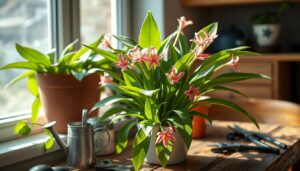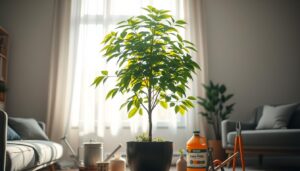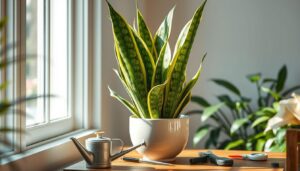Introduction
In the realm of botanical wonder, few plants captivate enthusiasts quite like the Wandering Jew. Its vibrant hues and resilient nature have long fascinated gardeners and plant enthusiasts alike. Among the many curiosities surrounding this species, a common query persists: Can the Wandering Jew thrive indefinitely in water?
The Wandering Jew, scientifically known as Tradescantia zebrina, boasts a rich history intertwined with mythology and botanical fascination. Originating from the tropical regions of Mexico and Central America, this perennial herbaceous plant has earned its moniker due to its vigorous growth habits, often “wandering” across garden beds with its trailing vines.
Exploring the Aquatic Adaptation of the Wandering Jew
The allure of cultivating plants in water is undeniable. It offers a serene aesthetic, requires minimal maintenance, and can be an intriguing experiment for plant enthusiasts. When it comes to the Wandering Jew, its ability to adapt to various environments sparks curiosity about its potential longevity in water.
To understand the Wandering Jew’s aquatic adaptation, we delve into its botanical characteristics. This species possesses succulent stems and leaves, enabling it to store water efficiently—a trait advantageous in both terrestrial and aquatic settings. When submerged, the Wandering Jew’s succulent nature allows it to absorb moisture directly through its stems and foliage, sustaining its vitality.
However, while the Wandering Jew can survive in water for extended periods, its long-term health depends on several factors. Let’s explore these factors in detail:
- Water Quality: The quality of the water significantly impacts the Wandering Jew’s ability to thrive. Clean, oxygenated water supports optimal growth, while stagnant or polluted water can lead to stagnation and decline. Regular monitoring and replenishment of water are essential to maintain favorable conditions.
- Nutrient Availability: Like all plants, the Wandering Jew requires essential nutrients for growth and development. In a water-based environment, these nutrients must be present in the water or provided through specialized aquatic fertilizers. Key nutrients include nitrogen, phosphorus, and potassium, along with trace elements such as iron and magnesium.
- Light Exposure: Adequate light is crucial for photosynthesis, the process by which plants convert light energy into chemical energy to fuel growth. While the Wandering Jew can tolerate varying light levels, providing moderate to bright indirect light promotes robust growth and vibrant foliage. In a water-based setup, positioning the plant near a sunny window or supplementing with artificial grow lights ensures sufficient light exposure.
- Temperature Regulation: Temperature plays a pivotal role in the Wandering Jew’s overall health. While this species thrives in warm, humid conditions typical of its native habitat, excessively high temperatures can cause stress or even damage. Conversely, exposure to cold drafts or extreme temperature fluctuations may impede growth. Maintaining a stable temperature range conducive to plant growth is essential for long-term success.
Maximizing Growth Potential: Tips for Cultivating Wandering Jew in Water
Cultivating the Wandering Jew in water presents a unique opportunity to witness its remarkable adaptability firsthand. To ensure optimal growth and longevity, it’s essential to provide the proper care and environment conducive to its aquatic lifestyle. Here are some expert tips for cultivating Wandering Jew in water:
- Selecting the Right Container: Choose a container that allows for adequate root space and stability. Opt for glass jars, vases, or containers with a wide base to prevent tipping. Transparent vessels offer the added benefit of showcasing the plant’s roots, adding to the aesthetic appeal.
- Choosing the Ideal Water Level: Maintain the water level within the container to ensure the Wandering Jew’s roots remain submerged without entirely covering the foliage. Aim to keep the water level consistent to prevent stress on the plant and promote healthy growth.
- Water Quality Maintenance: Regularly check the water quality to ensure it remains clean and free from contaminants. Replace the water every one to two weeks or as needed to prevent stagnation and algae growth. Consider using filtered or distilled water to minimize mineral buildup, which can affect plant health.
- Feeding the Plant: Provide essential nutrients to support robust growth. Consider adding a balanced liquid fertilizer specifically formulated for aquatic plants. Dilute the fertilizer according to the manufacturer’s instructions and apply it to the water every few weeks during the growing season.
- Monitoring Light Exposure: Position the container in a location that receives moderate to bright indirect light. Avoid placing it in direct sunlight, as this can lead to leaf burn or overheating. Rotate the container periodically to ensure even light distribution and balanced growth.
- Maintaining Temperature and Humidity: Keep the Wandering Jew in a warm, humid environment reminiscent of its tropical origins. Avoid exposure to cold drafts or extreme temperature fluctuations, as these can stress the plant. Consider placing the container in a room with consistent temperature and humidity levels, or use a humidifier to create an ideal microclimate.
- Pruning and Propagation: Regularly prune the Wandering Jew to encourage bushier growth and prevent leggy stems. Use clean, sharp scissors to trim excess foliage and promote a tidy appearance. Additionally, propagate the plant by taking stem cuttings and placing them in water to root, expanding your Wandering Jew collection or sharing it with fellow enthusiasts.
Common Challenges and Solutions for Growing Wandering Jew in Water
While cultivating Wandering Jew in water can be a rewarding endeavor, it’s not without its challenges. From water quality issues to pest infestations, various factors can impact the health and vitality of your aquatic plants. Understanding these challenges and implementing effective solutions is crucial for maintaining thriving Wandering Jew specimens. Here are some common challenges encountered when growing Wandering Jew in water, along with practical solutions:
- Algae Growth:
- Challenge: Algae growth is a common issue in water-based environments, often leading to greenish discoloration of the water and competing with the Wandering Jew for nutrients.
- Solution: To combat algae growth, minimize light exposure by placing the container in a slightly shaded area or using opaque containers. Additionally, consider adding an aquarium-safe algae inhibitor or incorporating algae-eating fish or snails into the ecosystem to help control algae levels naturally.
- Root Rot:
- Challenge: Excessive moisture and poor drainage can contribute to root rot, causing the Wandering Jew’s roots to become mushy and discolored, ultimately leading to plant decline.
- Solution: Ensure proper drainage by selecting containers with drainage holes or adding a layer of gravel or pebbles to the bottom of the container before adding water. Allow the top inch of the soil to dry out between waterings to prevent waterlogged conditions and root rot.
- Mineral Buildup:
- Challenge: Over time, mineral salts can accumulate in the water and on the container’s walls, leading to unsightly deposits and potentially affecting the Wandering Jew’s health.
- Solution: Regularly flush the container with fresh water to remove excess minerals and prevent buildup. Consider using distilled or filtered water to minimize mineral content. If deposits have already formed, gently scrub the container with a mixture of vinegar and water to dissolve the buildup.
- Pest Infestations:
- Challenge: Aphids, spider mites, and other pests can infest Wandering Jew plants, causing damage to foliage and inhibiting growth.
- Solution: Monitor plants regularly for signs of pest infestation, such as yellowing or distorted leaves, and treat affected plants promptly with insecticidal soap or neem oil. Isolate infested plants to prevent the spread of pests to other specimens.
- Nutrient Deficiencies:
- Challenge: Inadequate nutrient availability can manifest as yellowing leaves, stunted growth, or poor overall plant health.
- Solution: Supplement with a balanced liquid fertilizer formulated for aquatic plants to provide essential nutrients. Follow the manufacturer’s instructions for dilution and application frequency to prevent overfertilization.
Expanding Your Wandering Jew Collection: Varieties and Cultivars
Diving deeper into the world of Wandering Jew plants unveils a diverse array of varieties and cultivars, each offering unique characteristics and visual appeal. Whether you’re a seasoned collector or a novice enthusiast, exploring the myriad options for Wandering Jew specimens can add depth and intrigue to your botanical pursuits. Here, we highlight some popular varieties and cultivars to consider adding to your collection:
- Tradescantia zebrina:
- Description: Also known as the Zebrina Wandering Jew or Inch Plant, Tradescantia zebrina is perhaps the most recognized and widely cultivated variety. It features striking foliage with deep green leaves adorned with silvery stripes or markings, reminiscent of a zebra’s pattern.
- Care Requirements: Tradescantia zebrina thrives in bright, indirect light and well-draining soil. Keep the soil consistently moist but not waterlogged, and fertilize sparingly during the growing season to encourage healthy growth.
- Tradescantia fluminensis:
- Description: Commonly referred to as the Wandering Jew or Inch Plant, Tradescantia fluminensis is prized for its lush, trailing vines and vibrant green leaves. Unlike its zebrina counterpart, fluminensis typically lacks the distinctive striping pattern.
- Care Requirements: Tradescantia fluminensis prefers bright, indirect light and regular watering to keep the soil evenly moist. It can tolerate slightly lower light levels than zebrina but may exhibit leggy growth if light is inadequate.
- Tradescantia pallida:
- Description: Also known as the Purple Heart or Purple Queen, Tradescantia pallida stands out for its striking purple foliage, which adds a pop of color to any indoor or outdoor space. In addition to its aesthetic appeal, it is prized for its trailing habit and ease of care.
- Care Requirements: Tradescantia pallida thrives in bright, indirect light and well-draining soil. Allow the soil to dry out slightly between waterings to prevent root rot, and trim back leggy growth to maintain a compact, bushy appearance.
- Tradescantia albiflora:
- Description: Tradescantia albiflora, commonly known as the White Velvet or White Gossamer Wandering Jew, features velvety green leaves with a silvery sheen and delicate white flowers that bloom intermittently throughout the growing season.
- Care Requirements: Provide Tradescantia albiflora with bright, indirect light and consistently moist soil. Avoid overwatering, as excessive moisture can lead to root rot, and fertilize lightly during the growing season to promote flowering.
Creative Uses and Display Ideas for Wandering Jew in Water
Harnessing the versatility and aesthetic appeal of Wandering Jew plants in water opens up a world of creative possibilities for indoor and outdoor decor. Whether you’re looking to adorn your living space with verdant accents or create eye-catching centerpieces for special occasions, incorporating Wandering Jew in water can elevate your botanical arrangements to new heights. Here are some imaginative uses and display ideas to inspire your next botanical endeavor:
- Hanging Gardens:
- Description: Create stunning hanging gardens by suspending clusters of Wandering Jew plants in water from ceiling hooks or macrame plant hangers. Arrange multiple containers at varying heights to add dimension and visual interest to any room.
- Materials Needed: Wandering Jew plants in water-filled containers, ceiling hooks or macrame plant hangers, sturdy rope or chains for hanging.
- Terrariums and Miniature Gardens:
- Description: Construct enchanting terrariums or miniature gardens using Wandering Jew plants as focal points. Layer decorative elements such as pebbles, moss, and miniature figurines to create whimsical landscapes within glass containers.
- Materials Needed: Glass terrarium containers or jars, Wandering Jew plants in water, potting soil, decorative elements (pebbles, moss, and figurines), and small gardening tools.
- Tabletop Centerpieces:
- Description: Design captivating tabletop centerpieces by arranging clusters of Wandering Jew plants in water-filled vessels as focal points. Combine with complementary botanical elements such as candles, fresh flowers, or decorative rocks to enhance visual appeal.
- Materials Needed: Wandering Jew plants in water-filled containers, decorative vessels (glass vases, bowls), candles, fresh flowers, decorative rocks or gems.
- Living Wall Art:
- Description: Transform bare walls into living works of art by mounting vertical planters filled with Wandering Jew plants in water. Arrange multiple planters in geometric patterns or abstract designs to create a striking visual impact.
- Materials Needed: Vertical planters or mounted frames, Wandering Jew plants in water-filled containers, mounting hardware (screws, anchors), level, and drill.
- Outdoor Oasis:
- Description: Enhance outdoor spaces such as patios, balconies, or garden nooks with Wandering Jew plants displayed in water-filled containers. Cluster containers together to create lush greenery islands or line pathways for a touch of botanical beauty.
- Materials Needed: Outdoor-safe containers (ceramic pots, resin planters), Wandering Jew plants in water, potting soil (for stability), decorative gravel or mulch.
Conclusion: Celebrating the Enduring Charm of Wandering Jew Plants
In the realm of botanical marvels, few plants capture the imagination quite like the Wandering Jew. With its vibrant foliage, resilient nature, and remarkable adaptability to water-based environments, this species continues to captivate enthusiasts and green-thumb aficionados worldwide. As we conclude our exploration of the Wandering Jew’s aquatic journey, we reflect on the enduring charm and timeless allure it brings to our indoor and outdoor spaces.
From its humble origins in the tropical regions of Mexico and Central America to its widespread cultivation in homes, gardens, and botanical collections, the Wandering Jew stands as a testament to nature’s ingenuity and adaptability. Whether cascading gracefully from hanging baskets, adorning tabletops as living centerpieces, or gracing outdoor landscapes with its verdant beauty, this versatile plant adds a touch of elegance and vitality to any setting.
As we marvel at the intricate patterns of its foliage, bask in the tranquility of its lush greenery, and delight in its resilience in water, let us continue to celebrate the Wandering Jew’s enduring legacy. Through mindful care, creative expression, and a deep appreciation for the wonders of the natural world, we can ensure that the spirit of the Wandering Jew lives on, inspiring generations to come with its timeless charm and botanical grace.
In the ever-changing tapestry of botanical fascination, the Wandering Jew remains a steadfast companion, inviting us to wander, explore, and discover the boundless beauty of the natural world.
Thanks for visiting us here at the Trusted Houseplant Guide. If you ever happen to find yourselves in the stateline area in Northern Illinois stop and see us at The Landscape Connection.




